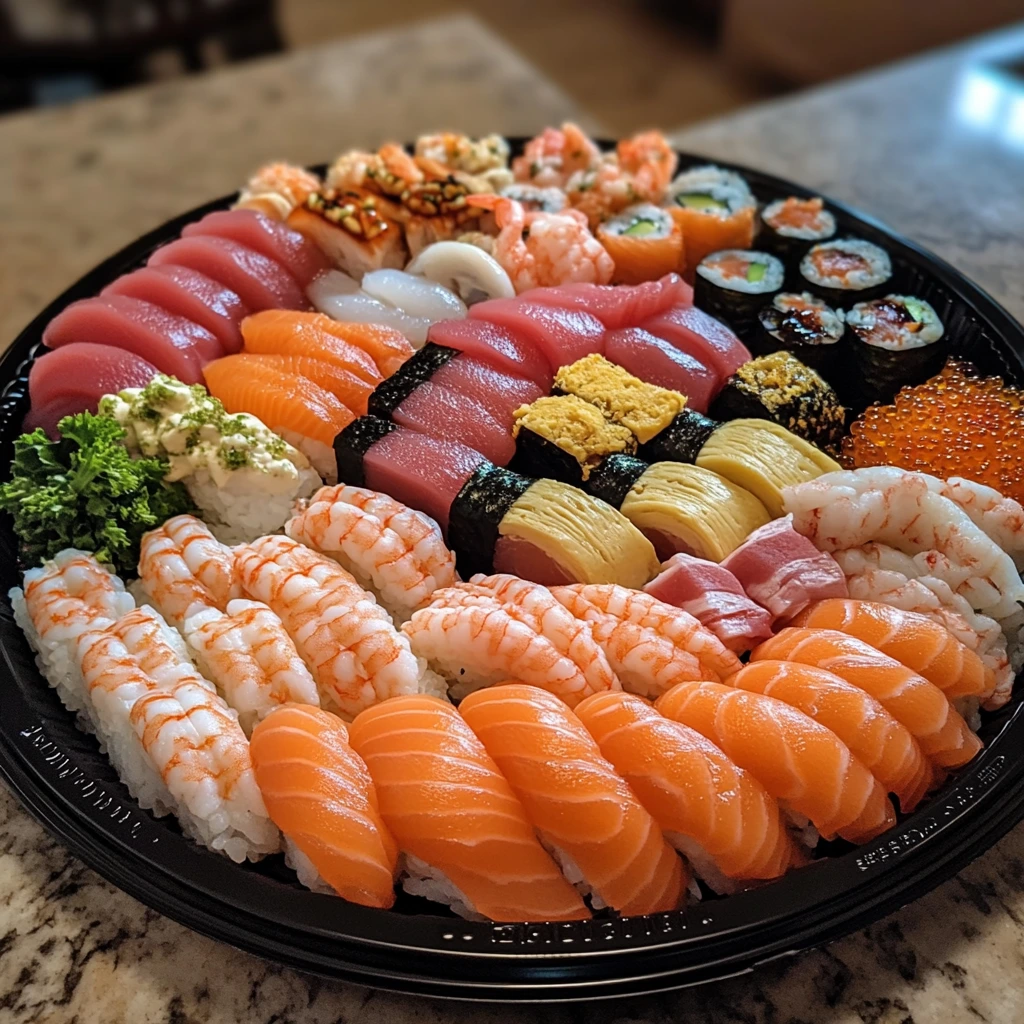Sushi, an iconic dish that has captivated the world, represents the artistry, precision, and balance of Japanese cuisine. While modern variations offer creative twists, traditional Japanese sushi remains a testament to simplicity and quality. Its foundation lies in the careful selection of fresh ingredients and meticulous techniques. By understanding its origins, styles, and cultural significance, you can fully appreciate the beauty of this beloved dish.
If you’re eager to explore the art of sushi-making, this complete guide to making Japanese sushi at home provides a great starting point. Additionally, if you want a creative yet delicious alternative, this salmon sushi bake recipe offers a fun twist.

A Brief History of Sushi
From Preservation to Culinary Art
Sushi has its roots in narezushi, a method of preserving fish with fermented rice. Over centuries, this practice evolved into a refined dish featuring vinegared rice paired with fresh fish. As Japan entered the Edo period, sushi underwent further transformation. During this time, chefs began crafting Edomae sushi, which showcased freshly prepared fish on hand-pressed rice.
Key developments in sushi history include:
- The introduction of vinegar to rice, which enhanced flavor and expedited preparation.
- The rise of sushi stalls in bustling Edo (modern-day Tokyo), making it a quick, portable meal for busy locals.
Today, sushi stands as a cultural icon, celebrated for its ability to blend tradition and innovation seamlessly.
Types of Traditional Japanese Sushi
1. Nigiri Sushi – The Quintessential Form
Nigiri, meaning “to grasp,” is one of the most traditional forms of sushi. Chefs craft it by hand-pressing seasoned rice and topping it with slices of fresh fish or seafood. This minimalist style emphasizes the importance of high-quality ingredients and precise preparation.
Popular toppings (neta) include:
- Tuna (maguro)
- Salmon (sake)
- Shrimp (ebi)
- Eel (unagi)
For a contemporary adaptation that retains traditional flavors, try this salmon sushi bake without cream cheese.
Eager to know more about What Is Baked Sushi Made Of?
2. Maki Sushi – Rolled Perfection
Unlike nigiri, maki sushi is rolled using nori (seaweed) to encase rice and fillings before being sliced into bite-sized pieces. This style offers endless variety and visual appeal, making it a favorite among sushi lovers.
Popular styles include:
- Hosomaki: Thin rolls featuring a single filling, such as cucumber or tuna.
- Futomaki: Thick rolls with multiple ingredients, offering a burst of flavors in each bite.
3. Sashimi – A Pure Expression of Freshness
Sashimi, although not technically sushi, highlights the essence of fresh seafood. Chefs slice high-quality fish into thin pieces and serve it without rice, allowing the natural flavors to shine. This minimalist approach makes sashimi a cornerstone of Japanese cuisine.
4. Chirashi Sushi – A Vibrant Bowl
Chirashi sushi is a colorful bowl of seasoned rice topped with an assortment of fish, vegetables, and garnishes. Its vibrant presentation and ease of preparation make it a popular choice for special occasions and festivals.
Ingredients and Techniques in Traditional Sushi
Key Ingredients
Traditional Japanese sushi depends on a few carefully selected ingredients, each contributing to its unique flavor and texture:
- Sushi rice (shari): Short-grain rice seasoned with rice vinegar, sugar, and salt forms the base of every sushi piece.
- Sashimi-grade fish: Freshness is paramount; common choices include tuna, salmon, and shrimp.
- Nori: Dried seaweed provides structure and a subtle umami flavor to rolls.
Essential Techniques
Mastering traditional sushi requires attention to detail and skillful execution:
- Rice preparation: Chefs meticulously rinse, cook, and season rice to achieve the ideal texture and flavor.
- Knife skills: Precise slicing techniques enhance the texture and visual appeal of fish.
- Presentation: Every piece of sushi is arranged thoughtfully, reflecting the Japanese principle of harmony.
To explore these essentials further, check out this guide to the three main ingredients in sushi.
Cultural Significance and Etiquette
The Role of Sushi in Japanese Culture
Sushi symbolizes Japan’s dedication to hospitality (omotenashi) and respect for craftsmanship. It plays a central role in festivals, family gatherings, and everyday meals, embodying the nation’s appreciation for balance and simplicity.
Proper Etiquette for Enjoying Sushi
To fully appreciate sushi, it’s important to follow proper dining etiquette:
- Use hands or chopsticks: Both are acceptable, but handle the rice delicately.
- Dip the fish, not the rice, into soy sauce: This prevents overpowering the rice’s subtle seasoning.
- Enjoy pickled ginger (gari) between bites: It refreshes the palate, ensuring you can savor each new piece.
For more helpful tips, learn how to master sushi etiquette in five simple steps.
FAQs
- What makes sushi authentic?
Authentic sushi relies on fresh ingredients, precise preparation techniques, and a respect for tradition. - What is the difference between sushi and sashimi?
Sushi pairs vinegared rice with various toppings, while sashimi features thinly sliced raw fish served without rice. - Are vegetarian options available in traditional sushi?
Yes! Vegetarian sushi includes cucumber rolls, pickled vegetable rolls, and avocado rolls. - What is the most traditional type of sushi?
Nigiri, with hand-pressed rice and fresh fish, is widely considered the most traditional style.
Conclusion
Traditional Japanese sushi is a beautiful blend of simplicity, artistry, and cultural heritage. From the refined elegance of nigiri to the colorful vibrancy of chirashi, it showcases the importance of fresh ingredients and meticulous preparation.
If you’re interested in trying a creative variation, this easy salmon sushi bake recipe offers a delightful take on traditional flavors.
Sushi is more than a meal—it’s a celebration of harmony and craftsmanship. Whether enjoyed at a sushi bar or crafted at home, each bite invites you to experience the timeless appeal of Japanese cuisine. Start your sushi journey today and discover the artistry behind this iconic dish!

